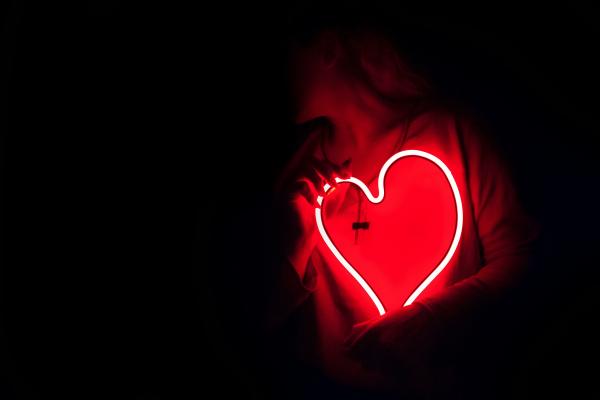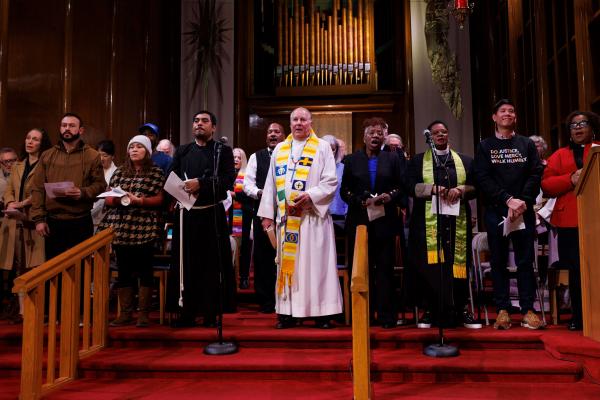As an immunocompromised person trying hard to survive the COVID-19, “plague years,” I’ve spent most of the last 20 months in strict lockdown at home in Southern California with my husband, our dog, and my late mother’s canary, Sean, not venturing much beyond the end of our driveway, sometimes for weeks at a stretch.
But in late September, fully vaccinated and booster-ed, I decided to toe the travel waters and take a low-risk, solo road trip to a destination that might seem counterintuitive: a monastery.
Yes, after nearly two years of intense isolation, what I wanted most was even more solitude.
It’s a six-hour drive up the California coast from my home in Laguna Beach to the New Camaldoli Hermitage in Big Sur. Approximately two dozen Benedictine monks, members of the thousand-year-old Camaldolese order — the oldest continuous religious community in the Western church — live on 900 acres of wilderness in the Santa Lucia mountains overlooking some of the most breathtaking and unspoiled coastline on the planet.
Since its establishment in 1958, the monks of New Camaldoli have welcomed more than 150,000 guests of all faith traditions and none to stay in simple accommodations.
A general silence is kept, except for the Liturgy of the Hours, when the community gathers in person (dutifully masked these days), to sing, chant, and pray the Psalms inside the hermitage chapel. Vespers, the evening prayers, are followed by a 30-minute silent meditation inside the skylight-lit rotunda.
New Camaldoli is about as off the grid as you can get in North America. There is neither cell phone service nor internet access; the nearest Wi-Fi is miles away, overpriced, and spotty. The stillness is palpable. It vibrates — a rich ecosystem of songbirds, raptors, owls, animals, cats (I encountered a stunning lynx, at a safe distance, on an early morning hike) and other creatures, thrums serenely with life, particularly at dawn and dusk, along the edges of the day.
This quietude at New Camaldoli is different than the imposed silence that accompanied the global time-out wrought by the pandemic. That silence descended like a pall when humans retreated, social distancing in the hopes of slowing the spread of a deadly virus. At the hermitage, the silence is chosen. In that choice there is a freedom to hear, see, and feel more of the natural world as well as our place in it. Such silence-keeping allows us to experience human community in a more deliberate and ultimately transformative way.
“Sit in your cell as in paradise,” St. Romuald, the 11th-century founder of the Camaldolese order, wrote in his brief rule. “Put the whole world behind you and forget it. Watch your thoughts like a good fisherman watching for fish.”
I first visited New Camaldoli in late August 2019, a few weeks after my mother died. I was on an extended solo journey — Instagram-christened as the #GriefRoadTrip — from Idaho, where Mom had been living for several years, back home to Southern California.
I arrived at the hermitage late at night under a thick blanket of fog. I couldn’t see more than a foot in front of the car’s bumper and I have little memory of how I found my way along 50 miles of Pacific Coast Highway, with its hairpin turns and guardrail-less cliff edges hundreds of feet above the Pacific, never mind the steep, unlit, two-mile lane of switchbacks that leads from the highway to the hermitage.
I do, however, vividly recall waking up the following morning, stepping onto the ocean-facing porch, and being dumbstruck by holy awe and delight at the natural spectacle that unfolded before me. Crystalline light and muted desert greens, huge craggy live oaks draped in lace lichen, riots of late summer blossoms, the heavy scent of sage and eucalyptus, and the thunderous roar of the ocean 1,200 feet below. When a thick marine layer crawls in “on little cat feet,” to borrow a phrase from Carl Sandburg, filling in the canyons like molten platinum, it feels as if the hermitage is a floating island, suspended above the clouds.
When I returned this year for another lengthy stay and stepped through the back door of the modest single room in the retreat house into a garden overlooking a vast canyon and the ocean, that same numinous awe returned. I let a loud gasp escape before clapping both hands over my mouth, concerned that I might have disturbed the peace of the retreatant in the room next door.
I quietly pulled up a chair, propped my feet up on the wooden fence top, and just … breathed for a long time. Looking. Listening. Absorbing the myriad sounds of silence.
“They open their doors and say, ‘Come on in and rest — that's what we can give you.’ And people need that so desperately,” Paula Huston, a Camaldolese oblate, told me when we talked via Zoom in late October. Oblates are non-monastic lay people, or members of other religious orders, who usually live outside a monastic setting but have made permanent vows to the Camaldolese order. The monks “have their job and they're doing it, and they're doing it because they've maintained community through thick and thin all these years with some very troubled times.”
In her new book, The Hermits of Big Sur, Huston recounts the not-always-harmonious history of the monks of New Camaldoli, as well as formative tales from the first 1,000 years of the Camaldolese order in a way that makes readers feel as if they’re hearing family stories, not history lessons. Based in part on nearly 60 years of notes and journal entries kept by the late Brother Robert Hale, who was among the first men to join the community at New Camaldoli when he made his first vows in 1960, the book is full of richly developed characters that might have walked straight out of a novel in their hooded white cassocks and all-terrain work sandals.
Over the millennia of its history, the Camadolese order has been able to do something many others have not — hold the community together despite inherent tensions between two seemingly polar interests: the eremitic (hermits) and the cenobitic (monks).
Hermits are monastics who live in intense isolation, but with a connection to a larger community, while monks (also known as “cenobites”) lead lives of deep contemplation and prayer, just like the hermits, but often living in large, communal housing known as monasteries or abbeys, where the focus is on community, not isolation. The Camaldolese approach to monastic life is decidedly nondualist. It’s not isolation versus community. It’s both, and — a lesson learned over the course of a thousand years, countless popes, two Vatican councils, two world wars, three waves of the bubonic plague, and almost two years of a pandemic.
While the world repeatedly tries to trap us in binaries, the Camaldolese understand that there is always a third option, and we must find it together. At a time when the world is terrifying and humanity feels inexorably polarized, it’s a lesson that is hope-giving.
The monks of New Camaldoli offer an alternative way to navigate through the terror and divisiveness of this age. Known in Latin as Triplex Bonum, they call it the “Three-Fold Good” and it has been the order’s charism (a spiritual gift for the good of all) for more than a thousand years. The First Good is community. The Second Good is solitude. And the Third Good is a bit more ineffable — it’s the unique spiritual gift, calling, or vocation of individual members of the community that completes them and produces joy.
“Each expression of the Third Good is different, and each is linked to a person’s particular gifts,” Huston explains in The Hermits of Big Sur. Hale, who died in 2018 and led New Camaldoli’s prior from 1988 to 2000 and again from 2012 to 2013, believed that the “natural formation that occurs through living in a close-knit community, combined with generous time given over to solitude and silence, almost invariably leads to a flowering of the Third Good in the life of an individual,” she writes.
For some members of the Camaldolese, the Third Good might be writing, horticulture, mechanics, or how to toast perfect oats for the Holy Granola. The current prior, Father Cyprian Consiglio, for example, is a composer and singer-songwriter who, in the Before Times, took time away from the hermitage to tour, performing throughout the United States and abroad.
“Our basic ministry is the witness to solitude for the world,” Father Raniero Hoffman, New Camaldoli’s former prior told me via email earlier this month. Hoffman has lived at the hermitage since 1990 and offers spiritual direction to hermitage visitors (including me). “Perhaps the lack of meaning and purpose in today’s world and culture (due to the fast pace and demands of the world) is creating a hunger for ‘the MORE.’”
“The More” transcends words and reason; it is what lies beyond society, religion, culture, or our individual lives, Hoffman explained. It is “a growing consciousness that we are humanly divine/divinely human … a oneness with God within us and a oneness with God within creation. This oneness is ‘the More’ of who we are, the source, ground, center of who we are. It is our truth, our freedom, our fullness.”
People are searching for the More, not realizing that it already dwells inside of them, “which is where God is, inside them … Silence takes them there — within themselves — and they are awakened and then begin to cultivate (through a daily spiritual practice) a consciousness of this oneness, their truth,” Hoffman said. “And our charism has something to offer.”
Huston concurs. In the 30 years she’s been affiliated with New Camaldoli, new, younger postulants have come and gone, and several have stayed, but it’s been many years since the last significant influx. She expects that to change in the coming years as the spiritual and cultural ramifications of the COVID-19 era play out in a similar fashion to how vocations boomed in the 1950s and ’60s, after the horrors of World War II led many people to reassess the meaning of life, what they believed, and how they chose to live.
“My personal prediction is that we’re going to have another wave of guys showing up here as postulants,” Huston said. “The pandemic sat everybody back on their heels … It sent people down this road, and everybody had to go — it didn’t matter whether you had some secret call to contemplation or whatever. They were stuck in their own places, not socializing and without all the distractions they were so used to. It’s going to take years for that to unfold, but we’re starting to see the effects.
“Why don’t people want to go back to their low-paying, high-stress waiter jobs?” she said. “Well, because they finally had time to think about their lives, a long, sustained spell of looking at how they live.”
Even if involuntary, such circumstances invariably bred a measure of introspection and contemplation, which, for folks such as me, sparked twin yearnings to go deeper into solitude — fuga mundi (“withdrawal from the world” in Latin) — and to connect authentically with beloved community.
“A good, strong, healthy community is going to look at its members and name their gifts and help them fulfill those gifts in whatever ways they possibly can,” Huston said. “Everybody’s going to be strengthened and bolstered and reconnected over and over again to God by the practice of solitude.”
But what happens when we must leave the hermitage and return to our routine lives?
“My greatest fear is that I’ll forget what’s true,” celebrated author Pico Iyer writes in the foreword to Huston’s new book. Iyer, who describes himself as a “Hindu-born traveler long based in Japan,” has been a frequent hermitage visitor for three decades and serves as New Camaldoli’s poet in residence. “The danger with a cluttered mind is the same as with a cluttered desk: in a moment of need, you can’t put your hand on what really sustains you. But then I think of the drive along the ever more pristine highway to the sign that leads to the top of the mountain. … A little clarity and the peace of the hermitage will be with me even in the most stressful of moments.”
The morning I left the hermitage after nearly a fortnight in 2019, I met with Hoffman for a spiritual direction session. Like Iyer, I worried about losing the stillness, calm, and internal peace I had cultivated during my time among the monks and alone in the natural wonders of Big Sur. Would it evaporate the first time another driver honked at me on the drive back to the rest of my life?
“You can’t lose it, Cathleen,” Hoffman said in his gentle yet fully assured way. “It’s inside you now. It’s always going to be there.”
Before I began the journey back home, I stopped in the bookstore to grab a pound of Mystic Monk coffee, bags of the Holy Granola made on site, and a jar of sumptuous body butter crafted by Camoldolese brethren in Italy. I also purchased a small, wood-framed mirror upon which the artist Katherine Moore had painted an abstract rendering of the hermitage chapel, flanked by tall cypress trees.
Moore left the surface of the mirror inside the chapel’s tiny front door unpainted. I can see my reflection in it.
The piece hangs at eye level on my bedroom wall at home, right next to the doorway, so that each time I cross the threshold, I am reminded of the life-giving stillness that envelopes New Camaldoli, found purchase in my heart, and cannot be lost.
Even in a plague year.
Got something to say about what you're reading? We value your feedback!







